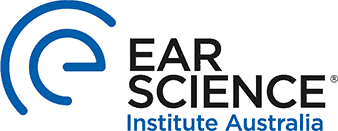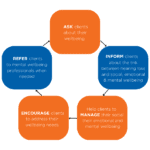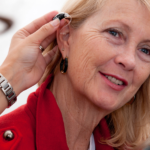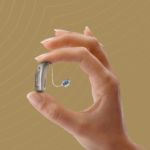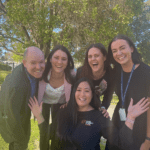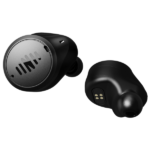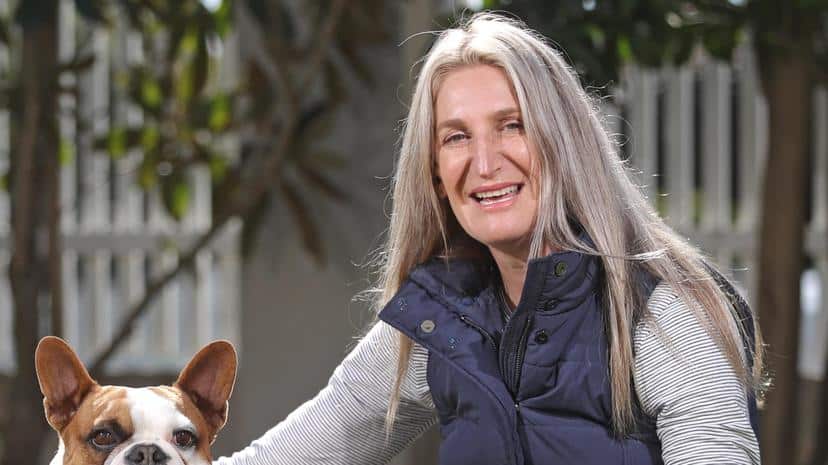Qualified Audiologist Daniel Gerace shares with us how the latest research on the impact of hearing loss is guiding clinical care. He shares how technology such as invisible hearing aids, Bluetooth enabled devices, connectivity to smartphones and TVs is helping people feel empowered to take control of their hearing and experience the world in full sound!
Dan Van Der Meer: [00:02] This is The Ear Science podcast, The Science of Healthy Hearing.
Lize Coetzee: [00:09] Hello and welcome to The Ear Science podcast, The Science of Healthy Hearing. Proudly presented by Ear Science Institute Australia, a not-for-profit medical research Institute. In this podcast, we’ll bring you into our world, the world of ear and hearing science. We will discuss the latest in ear and hearing research and what it means to you.
Dan: [00:31] I’m Dan Van Der Meer. I’m a digital content specialist, podcast host, and passionate about raising the awareness of healthy hearing.
Lize: [00:38] And I’m Lize Coetzee. I’m a qualified audiologist and Chief Operating Officer at Ear Science Institute Australia.
Dan: [00:45] This podcast provides information of a general nature and does not constitute medical advice.
Lize: [00:50] Today, we are talking to qualified audiologist, Daniel Gerace from Lions Hearing Clinic about how the latest research on the impact of hearing loss is guiding his clinical care and how he is harnessing technology to help his clients feel empowered to take control of their hearing and experience the world of full sound.
Dan: [01:11] Daniel, welcome to the Ear Science podcast.
Daniel Gerace: [01:14] Thanks for having me.
Dan: [01:15] Oh, thank you very much. You’re a busy Lions Hearing Clinic audiologist, seeing clients every day. How are you implementing the latest research into clinical care?
Daniel Gerace: [01:22] So, we know that one in six Australians experience hearing loss, and in fact, our market research shows that potentially three in five people have some sort of hearing impairment. So earlier in season one, you heard from my colleagues and researchers at Ear Science. So, Dr. Bec Bennett and Dr. Dona Jayakody, whose studies clearly show the link between hearing loss and feelings of isolation and loneliness, cognitive decline and even dementia. So, the research is telling us how important it is to take action on our hearing health. Yet, we also know that 80% of people who need a hearing aid don’t actually have one. I’m privileged to work as an audiologist where every day I can bring together the research and technology to help my clients access the help they need to live a healthy life.
Lize: [02:02] Wow. Daniel, I mean, those statistics are just, you know, they don’t paint a very positive picture, that prevalence and the impact of hearing loss. How, in your career as an audiologist, what are the changes and advancements in technology that you’ve been seeing?
Daniel Gerace: [02:19] So, it’s a really exciting time to be an audiologist today because there’s so much change in our industry and this is really needed. So, our head of brain and hearing associate, Professor Melanie Ferguson, has shown that more than half of people with hearing aids found difficulty using them. This has prompted us as an industry to provide better, more user-friendly solutions, but also to deliver services in a way that focuses on the client and ensures their needs are at the centre of our care. We’re now even seeing consumer electronic companies enter the hearing space. So, to see tech giants such as Apple and Bose acknowledge the importance of hearing raise awareness of hearing loss and reduce the stigma of hearing devices is exciting to see as an audiologist.
Dan: [02:56] So, Apple and Bose who make speakers and EarPods, so, they’re in this space now.
Daniel Gerace: [03:04] Yeah, exactly. Yeah. So, they’re basically from making just over the counter consumer products, they’re starting to tap into hearing healthcare as well. So, counting for people with hearing loss who use their products as well. Yeah.
Dan: [03:14] Wow. It’s kind of smart too, when you know, the whole products around people hearing what they’re providing.
Daniel Gerace: [03:19] Yeah, yeah, exactly. So yeah, this widespread edition of Bluetooth has made a massive impact and it’s become the norm in hearing aid technology now with most aids in the market, having this tech available.
Dan: [03:31] How good is Bluetooth?
Daniel Gerace: [03:32] Just PS. I mean, like, honestly, it’s changed my life. I mean, I’ve got fairly good hearing, I would’ve thought, but the technology that advancements in Bluetooth particularly, and I’m really interested, we’re gonna talk about this with you, but just what it does now is wonderful. And the connectivity of it. Yeah.
Lize: [03:46] And Dan, you know, maybe before we get onto the Bluetooth and maybe delving into that a little bit more, you know, when we talk about the advancements, I just want to also raise cochlear implants and how amazing the technology is. So, we heard little bit earlier in our season, Ronel Chester-Brown talking about cochlear implants. And one of our researchers, Dr. Cathy Sucher has actually shown the advancements in technology with cochlear implants. Has made it now a technology that’s suitable for so many more people. So, before it was really something that’s for kids or maybe people that have very profound hearing losses, but that candidacy has increased. So, when we talk about technology, cochlear implants play a very important role there too. But let’s get back to the Bluetooth.
Dan: [04:35] Bluetooth. Daniel, you mentioned Bluetooth capabilities being used in a lot of devices these days and hearing devices integrating in our life. Tell me and tell the audience how this is relevant to a person with hearing loss.
Daniel Gerace: [04:48] Well, so many things can be done now through the power of Bluetooth technology. So, for example, hearing aid users can stream phone calls, music, podcasts directly from their electronic device to their hearing aids. So, your hearing aids are really become like a set of EarPods essentially. Likewise, the ability to connect the hearing aid to stream TV audio, and even to use with various remote microphones, which can be handy in lectures, restaurants, and other things like that.
Lize: [05:13] So, really your hearing aid is really integrating just with the normal general things that everybody would use in their household or in their lifestyle. Hearing aids are now integrating with that.
Daniel Gerace: [05:25] Exactly yeah.
Lize: [05:25] Which just, it must just normalize the process also, you know? For people to know that Bluetooth are now on a hearing aid and, you know, so you can just imagine how the advancements would go from here as well.
Daniel Gerace: [05:38] Yeah for sure. And definitely, when you mention Bluetooth, in hearing aid to clients, their eyes light up a little bit because either they’ve heard of it or they’re using it or, you know, someone that knows it or they use it for something else and yeah, it brings like bit of a cool factor in your heads. Yeah.
Dan: [05:55] I’ve got Bluetooth guys.
Daniel Gerace: [05:57] Essentially that’s a whole bunch of cool features, but to answer your question, the way this helps people with hearing loss is that we reduce the impact of any sort of background noise that’s around or a distance. So, for example, in the lecture theatre example, and we’re putting the sounds straight into the ears, both at the same time. So rather than just, you know, some of the tech in the old days when it could go to one hearing aid, you needed a special tool to go to both. Now we’re doing that directly. So, it’s really cool.
Dan: [06:22] So you’re basically going from listening in mono, you know, to stereo, is that what you’re saying? Is that example?
Daniel Gerace: [06:26] Yeah. And also reducing that anything in between the speaker and, and what you are listening to.
Dan: [06:33] Yeah, yeah, yeah. Wow.
Daniel Gerace: [06:33] Because it’s through the hearing aids, amplifies to your needs as well.
Dan: [06:37] Yeah. Great. Yeah.
Daniel Gerace: [06:38] So you can customize it pretty much to your particular situation.
Dan: [06:41] Fantastic.
Lize: [06:42] And Daniel, as an audiologist, we often have people that come in to us that say they struggle hearing the phone. You know, that’s often one of their goals that they wanna hear better on their phone, where they’ve got family overseas and things, does Bluetooth help with that at all?
Daniel Gerace: [06:56] Yeah. So definitely. So, by putting the sound directly into your ears, both ears at the same time from
Lize: [07:02] From the phone?
Daniel Gerace: [07:03] From the phone.
Lize: [07:04] Yeah. Great.
Daniel Gerace: [07:05] That’s right. So, phone, computer, if they’re Skyping, whatever it might be, as long as it has Bluetooth, it can connect straight to your straight to your ears.
Lize: [07:10] Daniel. That sounds amazing. The technology has really come a long way and it sounds life changing. But I know the research is saying people are still taking on average nine years to do anything about their hearing loss and you know, to take action. I know Azadeh Ebrahimi, one of the researchers at Ear Science has done really groundbreaking research to look at the barriers and drivers. So, what makes a person get a cochlear implant or what sort of hinders them from getting a cochlear implant? And her research showed that trust in the clinician was really the biggest driver for somebody to get a cochlear implant. And then sort of lack of referral pathways was one of those barriers. What are you seeing in the clinic day to day, why do you think that nine years is still there? This technology is advancing so much, why are you still seeing that nine years?
Daniel Gerace: [08:09] Yeah, that’s truly. So, people do wait on average nine years to take action on their hearing health, which means that some people are taking even longer. And that’s why it’s a big focus for us as a research Institute to better understand why that is so that we can better help people. We see clients struggling with hearing loss but they don’t wanna get hearing aids. And that’s because of many reasons. It could be their lifestyle, there’s that big stigma attached to it makes it look old.
Dan: [08:32] The grandparents had them and they looked horrible and yeah. But that was 40 years ago.
Daniel Gerace: [08:35] Exactly. Yeah. That’s right. And you get so many people coming in. Oh, not those big old things that we saw granddad couldn’t hear us. So, yeah. They might fear over losing it cause it’s such an expensive device. It could be all different things. Our Lions Hearing Clinic data shows that 87% of clients who choose to get a hearing aid are actually happy with their devices and the research has been proven that getting a hearing aid stimulates our brain, and that reduce the risk of cognitive decline. And so, essentially use it or lose it.
Dan: [09:05] That’s massive like yeah. With that part of particularly in an aging society where you’re gonna be worried about keeping stimulated. Yeah. Particularly that’s a big thing to think about.
Daniel Gerace: [09:15] Yeah. Yeah. For sure. Yep.
Lize: [09:16] And I just, you know, I mean 87% of people are happy once they, you know, get a hearing aid and people are still waiting, so we really need to make sure and hopefully the podcast will do it and we raise that awareness and get more people talking about their hearing health.
Daniel Gerace: [09:33] Yes, right, yeah. There’s lots of things that manufacturers are trying to do, hearing aid manufacturers, that we try and support them with. That’s offer different styles of hearing devices.
Dan: [09:46] For different lifestyles.
Daniel Gerace: [09:47] Exactly. So, everyone’s different, everyone’s got different values, different lifestyles. One of those, an example is the Lyric and that’s a device that can be worn 24/7, sits deep in the ear canal so you can go about your daily life. No management on a daily basis. Simply need to get it changed every six to eight weeks. So that’s an option for some.
Lize: [10:08] So, there’s no battery changing. You can’t see it at all. It’s really an invisible device.
Daniel Gerace: [10:13] That’s right. Yeah.
Lize: [10:14] That’s an obstacle for people, you know, just still that stigma of wearing a hearing aid and somebody think I’m old if I wear a hearing aid. It takes that away. It shouldn’t be the way we think, but some people unfortunately still do. So Lyric is a great option.
Daniel Gerace: [10:27] Yeah, for sure.
Dan: [10:28] And it’s funny how people, you know, for people who can’t see, they’re quite happy to go and get glasses, but for people can’t hear there’s a lot more hesitation about getting it treated. Hopefully people listening to this and, you know, making that decision to go and see someone about this because yeah, it’s a big thing.
Lize: [10:47] And Dan, hopefully, you know, the technology we’ve been speaking about and all that will slowly over the years, normalize hearing aids to be like glasses, our research that we’ll do to find out what are those drivers, what are those barriers, why are people waiting, will all help us to further our closer to it being like, well, we wearing glasses. And we’ve got our hearing aids be proud of it.
Daniel Gerace: [11:12] Correct. Yep. And if I can just add as well, the most important thing that I could encourage is to seek professional advice from an audiologist, they can help you determine what sort of device is best for you. They can show you all the different devices that are out there. It’s a tricky landscape. There’s lots out there. There’s lots to know. And it’s their job to help you through that.
Dan: [11:30] Yeah. That’s right. Yeah. Is there a hearing device that tunes out kids? Nagging and screaming. That’s what I wanna know.
Daniel Gerace: [11:37] Yeah. I get asked a lot.
(crosstalk)
Lize: [11:44] We’ll get the research team onto it. Daniel, you spoke about general consumer electronics entering the hearing space. So, what are you seeing with these devices and what role do they play? I know our research team and led by Melanie Ferguson, they’re really going to look at what hearables can do for us, but what are you seeing in your clinic currently, already clients asking about it? What are they saying? And how are you approaching it as an audiologist?
Daniel Gerace: [12:14] Yeah. So, a hearable is pretty much an extension of like your Apple watch. So, at the moment, one in five of us currently wear some type of fitness or activity tracker and these sort of trackers, likewise with hearables, they have biometric measurements which essentially measure the body and different physical characteristics, and these are a great way for people to help track their fitness and just motivate general wellbeing as well.
Dan: [12:38] That’s so cool.
Daniel Gerace: [12:39] Yeah. So, we’re coming from essentially something that was just made for hearing, but also now looking at a holistic view of general wellbeing and healthcare. So, evidence supports a promise of these in-ear senses to support things like temperature monitoring, the ability to detect falls so you can get a notification from loved ones. Monitoring blood pressure and heart rate, your step counts and even things like standing time.
Lize: [13:02] And Daniel, are you seeing that technology in just in hearables or are you seeing that in hearing aids as well?
Daniel Gerace: [13:08] Yeah. No. They’re definitely around in hearing aids as well. So, it’s not something that you can only get into hearable and there’s not things you can only get in the hearing aid in terms of that technology. It’s very much widespread now. Different manufacturers will have different features, but essentially, they’re available on both types of devices. Hearables are great for some people. They’re one of the many devices you can choose from. So, you’ve got your hearables, your hearing aids, your cochlear implants depending on your type of hearing loss or the nature of your hearing loss or what difficulties you’re having. You might benefit from one thing over another. At the end of the day, the best thing you can do, like we talked about a few times now, is talk to your audiologist. Get a hearing test. Find out the type of hearing loss you have and take it from there.
Dan: [13:50] Yep. Daniel, has there been any advancements to help clients wear the hearing aids more? We know, unfortunately, some hearing aids end up in the drawer next to the bed.
Daniel Gerace: [13:58] Yeah. So, if a client’s struggling with their hearing aids, we encourage them to come back to us and we can make some adjustments and, you know, fine tune what they need. Sometimes people don’t do that and they put the hearing aid in the drawer. Nowadays we’ve got a couple things that we can use. So, one of them is remote adjustments. So, that’s the ability for our client to sit at home in the comfort of their bed or their lounge, whatever it might be, and we can make adjustments in real time whilst having a chat to them from our office.
Dan: [14:30] Really? So, what, you can be talking to them remotely?
Daniel Gerace: [14:33] Yeah.
Dan: [14:34] Oh my, that’s fantastic.
Daniel Gerace: 14:34] Yeah, exactly. Yeah. Especially in these sort of uncertain times with COVID lockdowns and things like that, its been really useful. But also, for people who are fallen off the wagon a little bit, or, you know, need a bit of motivation, it’s helpful. Yeah. Another thing that we can use is something as simple as data logging, which is tracking your hourly usage of the hearing aids. It’s a little bit like wearing a pedometer. We, we all know how much more we walk when we’re wearing a speedometer.
Dan: [15:03] You’re getting judged.
Daniel Gerace: [15:04] Exactly. Yeah. Yeah.
Lize: [15:05] Daniel, on that remote adjustments, a way that I’ve also seen that work really well, especially as it relates to the question of the hearing aid in the drawer, is a client that continually comes in, that come in and see us, they want an adjustment to hear in their favourite restaurant or to hear their grandkids. And we make the best adjustment to what we can in that situation because they’re explaining the environment. But what this technology now has allowed us to do is we can have that client sit with their grandkids and go, “Okay, now you tell me what’s going on there. I’ll make the adjustment. And you can see if that works.” Because if that hearing aid works, when they hear their grandkids, that hearing aid is not gonna end up in the drawer. So, you can really make that real time and it’s not us, sort of, as an audiologist, hoping and guessing we’ve made the right adjustment. So that’s super powerful.
Daniel Gerace: [15:59] Yeah. Yeah. Before it was purely trial and error you’re right. But now we can do it in sync too, we can do it live. There’s also other things we can do using that same idea. And that’s, a lot of these hearing aid manufacturers have apps where people can make live adjustments themselves. Which means there’s a greater client empowerment as well. So, they have control over their hearing loss and, you know, they feel good about themselves, which is great.
Dan: [16:22] That is so cool. That’s so cool.
Lize: [16:24] And Dan, that empowerment piece is so important. And Bec did some research on hearing aid handling. So, she showed that, and that’s one of the Ear Science researchers, showed that if people can’t manage the hearing aids, changing batteries, you know, cleaning the device, they don’t wear their device. So, she’s actually developed a questionnaire that we, as clinicians can use or we can send out to the clients, which takes them through those steps to actually learn how to do those effectively. And that has significantly increased the, if you wanna call it adherence to wearing their devices.
Dan: [17:02] Yeah. So, Daniel, clearly, you’re dedicated to supporting clients experiencing hearing loss, which is fantastic. Why did you become an audiologist? What was the light bulb moment for you?
Daniel Gerace: [17:12] So, I used to actually work as a personal trainer. As an (indistinct). I don’t know about that anymore. So, I’ve been helping people, with healthcare, I’ve always enjoyed that, through a different type of rehab, but it came to a point where it wasn’t really for me anymore and I wanted to look into doing something else. I did some work placement at a hearing clinic, and I saw the combination of assessment rehabilitation, seeing the progress and the goal setting. Yeah. But the technology as well. And the technology, like the aspect of actually being involved in that, because I’ve always had an interest in technology, and putting all those together really caught my interests, applied the same week for the course and yeah, that was it.
Dan: [17:59] Awesome.
Lize: [18:00] So good Daniel. And do you have a client’s story to share maybe one of your favourite client’s stories now that you are in this field where you’re helping people and you’re using the technology and the services to help people?
Daniel Gerace: [18:14] Yeah, definitely. I’ve actually got one, a person that I just saw recently. The first assessment that she came in for, she didn’t say a word the whole time. She came with her husband; her husband did all the talking for her. She wasn’t sure about her hearing, I just suggested a trial. She came back for her review. She had her husband, her daughter, and her grandson there and she was leading the conversation. She was talking the whole time. And I mentioned to her, you seem a lot more confident now to have a chat with me. And she was like, “Oh, I can hear everything you’re saying.” So that was really nice. And it was just a matter of choosing the right hearing aid for her. Choosing the correct technology to match her lifestyle. And, and it was perfect. She loved it.
Dan: [18:58] And she did the right thing. She went and saw an audiologist. Got assessed and treated, it went the right way.
Lize: [19:06] So, Daniel, this is really inspirational, you know, your story you’ve shared, the technology that’s available. So as an audiologist, what would the key takeaways that you would like to share with our listeners regarding hearing technology?
Daniel Gerace: [19:20] So, I want everyone to know that there are all different options available, that there’s different things for different people, and it’s important to trust the science and speak to a qualified audiologist because they can help you navigate, they can help you find what’s best for you, and most of all, they can check your hearing to begin with. So, that’s the first step. And if you’re gonna do one thing today for your hearing health, it would be to do exactly that and get your hearing checked.
Lize: [19:48] Don’t delay.
Daniel Gerace: [19:48] No, healthy aging.
Lize: [19:51] Awesome.
Dan: [19:51] Well, Daniel Gerace, thank you so much for joining us on Ear Science Podcast. The Science of Healthy Hearing. I had a fantastic time talking to you. Thank you very much.
Daniel Gerace: [19:58] No, thank you. It’s been great.
Male speaker: [20:00] Lions Hearing Clinic offers the world’s first and only 100% invisible hearing aid with clear natural sound, no daily hassles, no batteries, and providing benefit 24/7. It’s a real game changer. Google Lions Hearing Clinic to see this discreet and convenient solution for moderate hearing loss might help you enter the room with more confidence. Book your obligation free trial today.
Dan: [20:26] That concludes season one of the Ear Science Podcast, the Science of Healthy Hearing. If you have enjoyed season one, let us know by rating and reviewing this podcast or share it with a friend or family member. Ensure you are subscribed so you’ll be the first to receive future episodes. To view this episode with captions, visit the Ear Science YouTube channel or our website, earscience.org.au/podcast. To suggest a topic for season two, and for more information and links to all the research papers on this topic, visit our website, earscience.org.au/podcast. The producer of The Ear Science podcast, The Science of Healthy Hearing is Emma Arland, with sound engineering and editing by Daniel Van Der Meer. We acknowledge the traditional custodians of the land we are recording this podcast on, the Whadjuk people of the Noongar nation, and the land on which you’re listening from. We pay respects to the elders, past, present, and emerging.
